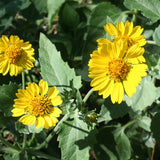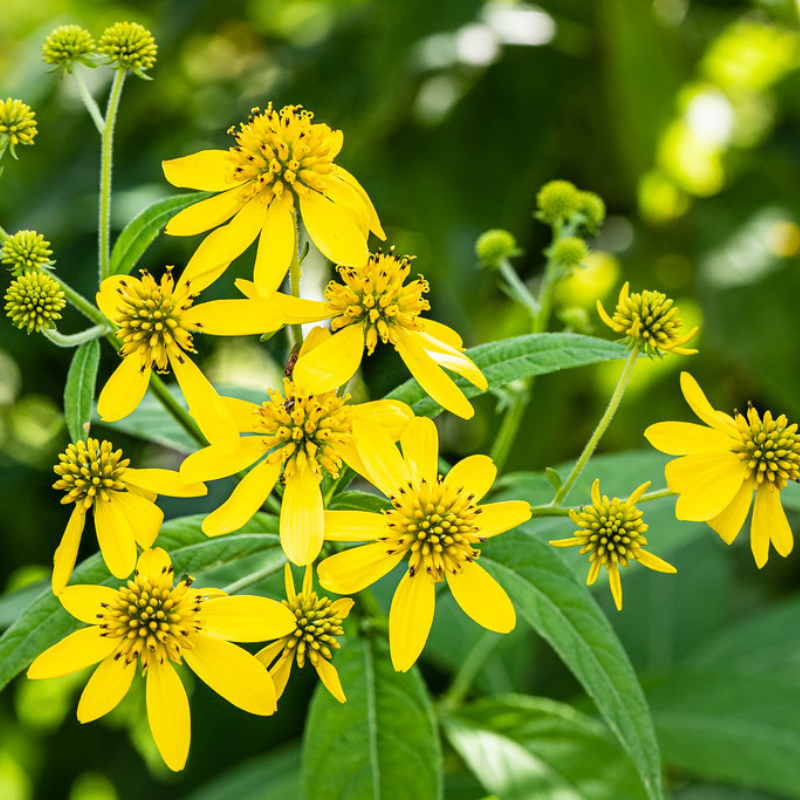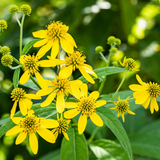VERBESINA alternifolia (Wingstem)
VERBESINA alternifolia (Wingstem) is a perennial flowering plant native to eastern and central North America, spanning from the United States (from Texas to Maine) to Canada (Ontario and Quebec). It belongs to the Asteraceae family, which includes sunflowers and daisies.
It is commonly found in moist habitats such as floodplains, stream banks, and damp woods. It can tolerate a wide range of soil conditions but prefers rich, loamy soils.
Wingstem typically grows to a height of 3 to 9 feet (0.9 to 2.7 meters) and has an upright, branching habit. The stem is sturdy and often winged, which gives the plant its common name. The leaves are alternate (hence the species name "alternifolia") and are elongated, toothed, and have a rough texture. The plant produces clusters of small, yellow flowers.
The flower blooms from late summer to early fall, typically from August to October. The yellow flowers are arranged in terminal clusters and attract pollinators like bees, butterflies, and other insects. After pollination, the flowers give way to small, dry fruits called achenes, which are dispersed by wind.
Ecological Importance: Wingstem provides important food and habitat for various wildlife. The nectar-rich flowers attract pollinators, supporting the local ecosystem. The plant also serves as a host for butterfly larvae, including the American painted lady (Vanessa virginiensis) and the bordered patch (Chlosyne lacinia).
Overall, Verbesina alternifolia (wingstem) is a tall, attractive plant with ecological value and traditional medicinal uses.
| Number of Seeds | Max Coverage Area (Square Ft.) | |
|---|---|---|
| 0.5OZ | 5,625 | 166 |
| 1OZ | 11,250 | 331 |
| 1/4LB | 45,000 | 1,325 |
| 1/2LB | 90,000 | 2,650 |
| 1LB | 180,000 | 5,300 |
| 5LB | 900,000 | 26,500 |
Scientific Name: Verbesina Alternifolia
Common Name: Wingstem
Plant Type: Perennials
Family: Asteraceae
Zone: 4 to 8
Native Range: Eastern and Central North America
Full Growth Height: 48-96 "
Width: 24-72 "
Exposure: Full Sun, Partial Sun
Blooming Season: Summer(Late), Fall
Flower: Showy, Dome-Shaped Clusters
Pollinators: Butterflies
Flower Color: Yellow
Tolerate: Deer
Water Requirement: Average, Low
Maintenance: Low
Soil Type: Clay, Loam, Well-Drained, Moist
Soil pH: Acid, Alkaline, Neutral
Uses: Prairies and Meadows, Native Gardens, Wildflower Meadows



